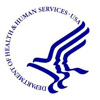Catalog of Environmental Programs 2012
| Federal agencies that contribute to EPA's environmental goals, and how they make a difference. |
the Catalog |
All Programs |
Programs by EPA Strategic Goal 1. Climate Change and Improving Air Quality 2. Protecting America's Waters 3. Cleaning Up and Sustainable Development 4. Safety of Chemicals and Preventing Pollution |
Programs by Agency AID, ARC, CNCS, CPSC, CSB, DHS, DOC, DOD, DOE, DOI, DOJ, DOL, DOS, DOT, ED, FHFA, GSA, HHS, HUD, NASA, NRC, NSF, OSTP, SBA, TVA, USDA, USPS, USTR, VA |

Department of Health and Human Services |

EPA Goal 2: Protecting America’s Waters |
Waterborne Disease and Outbreak Surveillance System
Purpose
The Waterborne Disease and Outbreak Surveillance System (WBDOSS) is a national surveillance
system that was initiated in 1971 as a partnership between the CDC, the Council of State
and Territorial Epidemiologists (CSTE), and the EPA. This system is dependent on public
health departments in individual states, territories, and the Freely Associated States
(composed of the Republic of the Marshall Islands, the Federated States of Micronesia
and the Republic of Palau; formerly parts of the U.S.-administered Trust Territories
of the Pacific Islands) to provide complete and accurate data for waterborne disease
and outbreaks. Although initially designed to collect data about drinking water
outbreaks in the United States, the WBDOSS now captures outbreaks associated with
recreational water, drinking water and non-recreational water that is not intended
for drinking or where the intended use is unknown. Annual or biennial surveillance
summaries of the data collected by the WBDOSS have been published in CDC reports
from 1971 to 1984 and in the Morbidity and Mortality Weekly Report (MMWR) from
1985 to the present. Data from WBDOSS have supported EPA efforts to develop
drinking water regulations and have provided guidance for CDC’s recreational
water activities, such as the Healthy Swimming program. Waterborne disease
and outbreak reporting to the WBDOSS is transitioning from a paper-based
system to the electronic National Outbreak Reporting System (NORS)
in 2009.
Source(s) of Information
1. CDC: Waterborne Disease and Outbreak Surveillance System (WBDOSS)
Related EPA Program(s)
Homeland Security: Critical Infrastructure Program:
This program involves EPA activities that help protect the nation’s critical public infrastructure from terrorist threats.
EPA is committed to assessing and reducing vulnerabilities and strengthening detection and response capabilities for
critical infrastructures. EPA assists local drinking water and wastewater systems in ensuring that they are safe from
terrorist and other intentional acts. Scientific exposure, hazard and risk data on extremely hazardous chemicals
is also provided to directly support chemical emergency planning, response, and prevention programs. Finally,
EPA will contribute to efforts led by other Federal agencies addressing food, transportation, and energy industry
threats by providing environmental expertise to support Federal law enforcement activities.
Authorizing Legislation
• Public Health Security and Bioterrorism Emergency and Response Act of 2002
• Safe Drinking Water Act
• Clean Water Act
• Ocean Dumping Act
• Emergency Planning and Community Right to Know Act
Other Programs under Goal 2
Other Programs from HHS
Top of page


